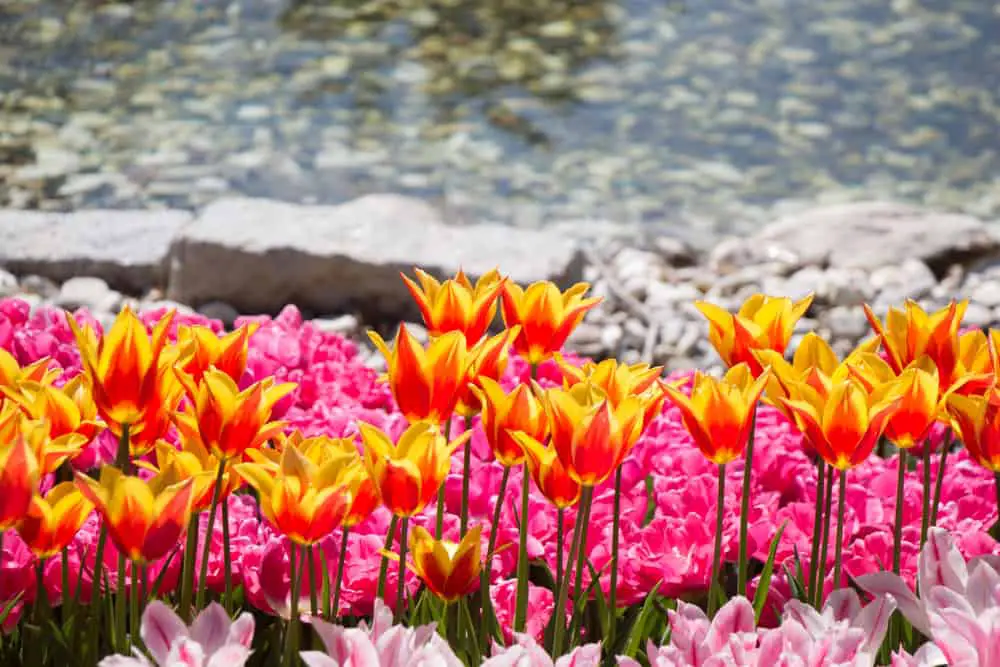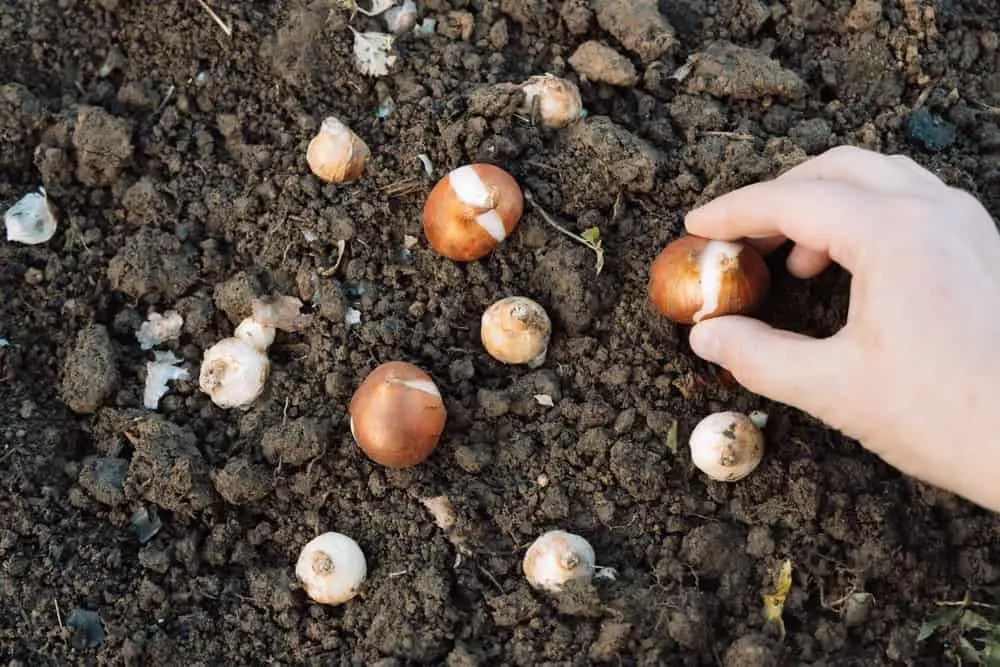Tulips are stunning. Regardless of your chosen variety, they will bring you great joy during the spring.
When you notice tulips poking their heads through your lawn, you know you are well on your way to warmer temperatures and the much-needed feel of the sun on your face.
Tulips are often associated with Amsterdam, where natives create mesmerizing displays and fields full of patterns. Despite this, the flower originated from the mountains of Kazakhstan before gradually making its way across the globe.
Today, tulips grow on almost every continent, making millions of people smile each spring.
However, although tulips are relatively easy to grow, planting them in your yard requires a certain amount of precision. They are not bulbs you can throw in the ground when you feel like it and hope for the best.
It’s also a good idea to think carefully about the variety you choose because they might not all be as giving as you’d expected.
Read on to learn why fall is the best time to plant tulips and which varieties will give you the most for your bucks.
Why Plant Tulips In Fall?

As with many flowering bulbs, the recommendation is to plant bulbs between late September and November. Tulips are no exception, and there is an excellent reason for this.
For tulips to grow in the spring, they need the cool winter weather to act as a ‘chilling’ period.
The amount of time will differ between bulb species, but for tulips, the typical time required is between 12-14 weeks. For a successful chill time, soil temperatures must remain below 55 degrees.
Enduring this prolonged cold is all part of the natural cycle of the bulb and flower.
During the 14 weeks, the bulb enters a kind of hibernation. The bulb will trigger new growth when the temperatures begin to rise, but they can only do it if they have been cold for long enough.
If your tulip bulbs do not have this essential period of cold, they cannot perform as they should, and often you’ll notice stunted growth, stems without bulbs, or a floppy and weak plant.
You can simulate this cold by using your refrigerator.
Pop your bulbs into a breathable bag and put them into the fridge for fall. Take them out when the weather in your area is at its coldest, and plant them immediately.
Will Tulips Return The Following Year?

Whether or not your bulbs return the following year depends mainly on how cold your winters are and the variety you choose.
If you live in a zone with milder winters, it’s unlikely you’ll see anything the following year, or if you do, it’s unlikely to be anything to shout about.
If you have a winter with considerably cooler temperatures, you might be in with a chance.
Although tulips are classed as perennials, meaning they come back each year, you’ll rarely see more than one exceptional bloom, so to ensure an excellent display, plant fresh bulbs each autumn.
Some gardeners attempt to dig up their bulbs and pop them into the freezer to stimulate the chill period, hoping they will last another season or two, although this rarely works.
However, it may be possible to chill bulbs in a container. You can do this by placing them inside a plastic page and placing them in your fridge.
5 Things To Remember When Planting Tulips

Tulips are super simple to plant, and for best results, follow these top tips.
1. Plant During The Fall
Of course, we have covered it already, but planting during the fall is the most critical thing to remember if you want your tulips to look fabulous.
They must have their ‘chilling’ time to grow strong and resilient.
2. Choose The Right Spot
Most tulips do not like boggy soil, so make sure you choose a spot that remains moist but, for the most part, has excellent drainage.
Almost all varieties love the sun and will struggle with anything less than full sunlight.
If you want to plant in a more shady patch, consider planting Tulipa sylvestris that will tolerate these conditions
3. Think Of The Depth
When it comes to putting the bulbs in the ground, aim for a depth of 6 inches, which should be around twice the depth of the bulb itself and no less than 4 inches apart.
Make sure the pointed end of the bulb is facing north, and then cover it with soil.
4. Water
Once they’re in the ground, give them a good drink of water, which will help them to bed down and be ready for the long game.
You shouldn’t need to water them again unless you have a particularly dry spell.
5. Wait
All that’s left to do is wait and let nature do its thing.
Then come spring, and depending on your chosen tulip variety, you’ll see tall green shoots growing taller than your lawn with larger heads developing, ready to stand in all their glory.
What Are The Top 5 Varieties Of Tulips To Plant?
There are currently around 3,000 varieties of tulips you can choose from for your yard; that’s a lot to sift through.
Some are wild, and some cultivated, and although all of them are beautiful, some are stronger and more reliable.
Here are the top 5 to plant in the fall.
1. Triumph Tulips

Triumph tulips are some of the most significant in size and produce a single magnificent flower. You can buy them in many colors, including multi-colors.
Triumph tulips are one of the sturdier varieties and are less likely to fall victim to the wind, rain, or other threats, potentially making them longer lasting.
2. Darwin Hybrid

The Darwin Hybrid tulip is a firm favorite among growers, and for a good reason. The variety has been cultivated for its striking colors, multiple blooms, and strong, robust presence.
They are statement pieces with more giant flowers than most and more tolerance to changes in temperature.
If your winters are cool enough, they’re also the tulip variety most likely to reappear in good health the following year.
3. Angelique

Tulip Angelique is known to be one of the most beautiful varieties. Of course, this is all a matter of opinion but based on their delicate, pale pink, fluffy petals, many agree.
They have more petals than many other varieties, making them look like a peony; however, they are not, and as they age, their color deepens dramatically.
4. Antoinette

Tulip Antoinette is one of the most beautiful multi-headed tulips.
When you plant varieties such as this, your display doubles or quadruples because each bulb produces more than one flower, which is excellent if you plan to cover a lot of ground with tulips.
Multi-headed varieties of tulips also tend to flower slightly later in spring, so if mixed with some earlier bloomers, these will keep your garden exciting for longer.
5. Kaufmanniana

You can’t ignore the wildest of these species that still largely resemble their original heritage in central Asia.
Varieties of wildflower tulips, such as Kaufmanniana, make it onto the list because they are beautiful but return yearly more readily as long as the soil conditions are right.
They also spread easier than other varieties and will fill areas of otherwise untended ground.






